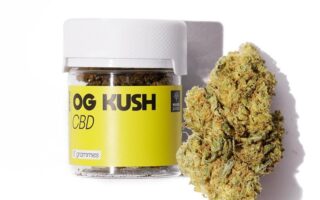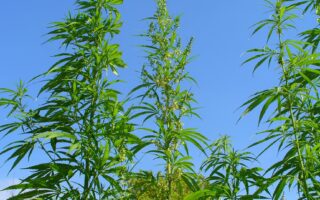As society’s understanding of cannabis evolves, so too does our appreciation for the intricate tapestry of compounds that define this multifaceted plant. At the heart of the conversation surrounding marijuana lies its active ingredients—primarily cannabinoids and terpenes—each playing a pivotal role in shaping the plant’s effects, therapeutic potential, and diverse applications. From the well-known psychoactive properties of THC to the soothing qualities of CBD, these active ingredients are much more than mere components; they are key players in the growing narrative of cannabis. In this article, we will delve into the science behind these active ingredients, exploring their unique characteristics, interactions, and the profound ways they influence our understanding of marijuana, both recreationally and medicinally. Join us on a journey to uncover the secrets locked within this ancient herb, revealing how its active ingredients contribute to a rich tapestry of experience and healing.
Table of Contents
- Exploring Cannabinoids: The Power Players in Marijuana
- Terpenes Unveiled: Aromatic Compounds and Their Benefits
- The Entourage Effect: Understanding Synergy in Cannabis
- Navigating Dosage: Tailoring Active Ingredients for Individual Needs
- Q&A
- Insights and Conclusions
Exploring Cannabinoids: The Power Players in Marijuana
The world of marijuana is rich with a diverse array of compounds that work in synergy to produce its myriad effects. At the forefront of this intricate biochemical tapestry are the cannabinoids, each with unique properties and potential benefits. The most commonly recognized cannabinoid is delta-9-tetrahydrocannabinol (THC), known for its psychoactive effects and ability to induce euphoria. On the flip side, cannabidiol (CBD) has gained prominence for its therapeutic potential without the high, making it a favored choice among users seeking relief from various ailments.
In addition to THC and CBD, many other cannabinoids contribute to the plant’s effectiveness. Some noteworthy players include:
- CBG (Cannabigerol) – Often dubbed the “mother of cannabinoids,” it serves as a precursor to THC and CBD and is being studied for its potential anti-inflammatory properties.
- CBN (Cannabinol) - Typically formed as THC degrades, it is believed to have mild psychoactive properties and may promote sleep.
- THCA (Tetrahydrocannabinolic Acid) – The non-psychoactive precursor to THC that may offer benefits such as anti-nausea effects.
Understanding the roles of these cannabinoids is essential, as they interact with the human endocannabinoid system, influencing various physiological processes. This complex interplay not only shapes the psychoactive effects but also determines therapeutic outcomes, making it crucial for consumers to consider cannabinoid profiles when selecting products.
Terpenes Unveiled: Aromatic Compounds and Their Benefits
Many enthusiasts and researchers are beginning to dive deeper into the world of terpenes, aromatic compounds that not only contribute to the distinctive fragrances of various cannabis strains but also play significant roles in the therapeutic benefits of the plant. These organic compounds are found in numerous plants and have been observed to interact synergistically with cannabinoids, leading to what is often referred to as the “entourage effect.” This phenomenon suggests that the combined effect of terpenes and cannabinoids results in enhanced therapeutic outcomes, making it important to understand the various types of terpenes and their unique properties.
Among the wide array of terpenes present in marijuana, some of the most prominent include:
- Myrcene: Often associated with relaxing effects, it’s thought to promote sedation.
- Limonene: Known for its citrus aroma, it can elevate mood and alleviate stress.
- Pinene: Providing a fresh pine scent, it may help with alertness and memory retention.
- Linalool: With floral notes, this terpene is famous for its calming properties.
| Terpene | Aroma | Potential Benefits |
|---|---|---|
| Myrcene | Earthy, musky | Relaxation, sleep aid |
| Limonene | Citrusy | Uplifting, anti-anxiety |
| Pinene | Pine | Memory enhancement, anti-inflammatory |
| Linalool | Floral | Stress relief, anti-anxiety |
The Entourage Effect: Understanding Synergy in Cannabis
The phenomenon of synergy within cannabis emphasizes how various compounds work together to enhance the therapeutic effects of the plant. Rather than isolating individual active ingredients, such as THC and CBD, understanding their interactions can lead to a more holistic approach to using cannabis for medicinal purposes. When combined, these compounds can potentially improve efficacy and reduce adverse effects, providing a richer experience for users. Key components often involved in this synergistic relationship include:
- Terpenes: Aromatic compounds that contribute to the flavor and smell of cannabis while also modulating effects.
- Flavonoids: Antioxidant-rich compounds that may enhance the anti-inflammatory properties of cannabis.
- Acids: Precursor compounds that can impact the overall therapeutic profile when heated or decarboxylated.
Research reveals that the complexity of these interactions is best understood when analyzing specific strains and their unique profiles. This understanding can pave the way for tailored treatment options that maximize therapeutic benefits while minimizing side effects. Below is a comparison of common cannabinoids and their potential effects in the context of their interaction:
| Cannabinoid | Potential Effects | Synergistic Benefits |
|---|---|---|
| THC | Provides euphoria and pain relief | Amplified by CBD to reduce anxiety |
| CBD | Reduces inflammation and anxiety | Enhances effects of terpenes for mood stabilization |
| CBG | Promotes neuroprotection and inflammation reduction | Aids in broadening the therapeutic spectrum with THC |
Navigating Dosage: Tailoring Active Ingredients for Individual Needs
When it comes to cannabis, understanding the various active ingredients—primarily cannabinoids and terpenes—is crucial for tailored dosages. Each person has unique physiological traits and health conditions that influence how these compounds interact within their bodies. For instance, THC is often sought for its psychoactive effects, but some individuals may experience anxiety with higher doses. In contrast, CBD is praised for its therapeutic benefits without the high, making it a preferred choice for those seeking relief without intoxication. Striking the right balance between these active ingredients is key, as it can lead to enhanced effects for pain management, anxiety reduction, or overall wellness.
To assist in navigating these options, consider the following factors when determining dosage:
- Body Weight: Heavier individuals may require larger doses.
- Tolerance Level: Regular users often need higher doses compared to newcomers.
- Desired Effect: Clarifying whether you want therapeutic relief or psychoactive effects is essential.
- Delivery Method: Different methods (e.g., smoking, edibles, oils) affect onset and duration of effects.
Here’s a simple comparison of popular cannabinoids to facilitate dosage decisions:
| Cannabinoid | Main Effects | Recommended Dosage Range |
|---|---|---|
| THC | Psychoactive, Pain Relief | 5-20 mg |
| CBD | Anti-inflammatory, Anxiolytic | 10-50 mg |
| CBG | Neuroprotective, Anti-bacterial | 5-25 mg |
| CBN | Sleep Aid, Relaxation | 5-15 mg |
By taking the time to assess personal needs and understanding the relationship between active ingredients and individual physiology, users can better manage their cannabis experience, ensuring effective and enjoyable outcomes.
Q&A
Q&A: Unraveling the Active Ingredients in Marijuana
Q1: What are the primary active ingredients found in marijuana?
A1: The primary active ingredients in marijuana are cannabinoids, terpenes, and flavonoids. Cannabinoids, like THC (tetrahydrocannabinol) and CBD (cannabidiol), are responsible for many of marijuana’s effects on the body and mind. Terpenes contribute to the plant’s aroma and may influence its effects. Flavonoids, while not as well-studied, add to the color and might have their own therapeutic properties.
Q2: Can you explain the difference between THC and CBD?
A2: Absolutely! THC is the psychoactive component of marijuana that produces the “high” effect. It binds to the body’s CB1 receptors in the brain and can alter mood, perception, and cognitive function. On the other hand, CBD is non-psychoactive and has gained popularity for its potential therapeutic effects such as reducing anxiety or inflammation without any intoxicating effects.
Q3: What role do terpenes play in the effects of marijuana?
A3: Terpenes are aromatic compounds that not only contribute to the distinct scent of different strains but also may enhance the effects of cannabinoids through what’s known as the ”entourage effect.” Each terpene possesses its unique profile and potential benefits; for instance, myrcene may produce relaxing effects, while pinene might offer alertness.
Q4: Are there other cannabinoids apart from THC and CBD that are worth noting?
A4: Yes, indeed! Apart from THC and CBD, there are several other cannabinoids including CBG (cannabigerol), CBN (cannabinol), and THCV (tetrahydrocannabivarin). Each of these compounds carries its unique properties. CBG is touted for its potential anti-inflammatory benefits, while THCV may suppress appetite, making it interesting for those seeking weight management solutions.
Q5: Do the active ingredients in marijuana affect everyone the same way?
A5: Not exactly. The effects of marijuana can vary widely among individuals due to factors like body chemistry, the method of consumption, and the specific strain used. Genetic predispositions, dosage, and even the environment can influence how someone experiences the active ingredients.
Q6: Are there any health benefits associated with these active ingredients?
A6: Research is ongoing, but there is evidence that both THC and CBD may offer therapeutic benefits. THC may help with pain relief, appetite stimulation, and nausea reduction, while CBD is investigated for its potential in treating anxiety, chronic pain, and certain seizure disorders. It’s essential, however, to approach these findings with caution and consult healthcare professionals when considering medical use.
Q7: How do people typically consume marijuana to harness its active ingredients?
A7: People consume marijuana in various ways, including smoking, vaporizing, edibles, tinctures, and topicals. Each method can affect the onset, duration, and intensity of effects due to how the body metabolizes cannabinoids. For example, edibles may take longer to feel but can produce a prolonged effect, while smoking or vaping leads to quicker onset.
Q8: Is it possible to overdose on marijuana?
A8: While it is rare to experience a fatal overdose from marijuana in the traditional sense, it is possible to consume an excessive amount, particularly with edibles, which can lead to uncomfortable side effects like paranoia, anxiety, or impaired motor skills. It’s a good idea to start with a low dose and gradually increase as needed.
Q9: What’s the future of research on active ingredients in marijuana?
A9: The future looks promising, with an increasing number of studies focusing on the therapeutic potential of cannabinoids and other active ingredients in marijuana. As legislation evolves and stigma diminishes, researchers are likely to unveil deeper insights into how these compounds can be effectively utilized for various health conditions.
Q10: What should someone consider before using marijuana for its active ingredients?
A10: Individuals should consider their health history, any medications they may be taking, and local laws regarding marijuana use. Consultation with a healthcare provider can offer valuable guidance tailored to one’s personal circumstances. It’s also wise to stay informed about the strain types and their respective cannabinoid and terpene profiles to ensure the best experience possible.
Insights and Conclusions
As we navigate the intricate landscape of cannabis, it’s clear that its active ingredients hold a vast spectrum of potential benefits and effects. From the well-known psychoactive properties of THC to the therapeutic capabilities of CBD and other cannabinoids, these compounds weave a complex narrative that continues to evolve as research progresses.
Understanding the roles of various active ingredients not only empowers consumers to make informed choices but also sheds light on cannabis as a multifaceted plant with the capacity to influence wellness, creativity, and experience. As the dialogue surrounding marijuana continues to expand, so too will our appreciation for the science behind these remarkable compounds.
Ultimately, whether you’re a curious newcomer or a seasoned connoisseur, grasping the essentials of cannabis’s active ingredients invites a deeper connection to this ancient, yet ever-modern, plant. With innovation and exploration at the forefront, the story of marijuana and its intricate chemistry is far from over—it’s a narrative still being written, with each discovery offering new possibilities. So, whether you’re seeking relief, inspiration, or simply curiosity, the world of cannabis awaits your exploration.



